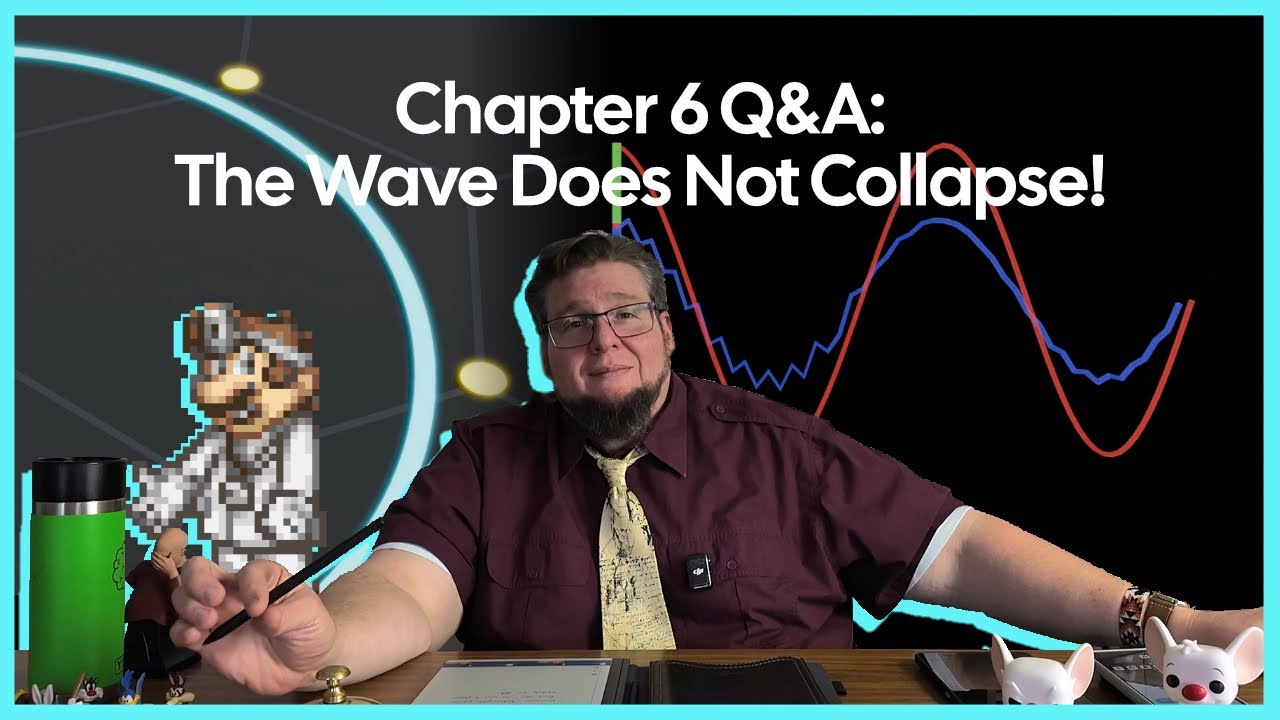The creator explains that electromagnetic waves, including photons, do not need to collapse but instead continue expanding and interacting through interference, which conserves energy and accounts for observed phenomena. He emphasizes a geometric, physical perspective on quantum interactions, illustrating how wave behavior and electron interactions can be understood through interference patterns and multi-dimensional shapes rather than particles popping in and out of existence.
In this follow-up video, the creator addresses common questions about the true nature of photons, specifically whether the wave does not collapse and how energy conservation is maintained if photons are rings that expand and interact with electrons. He emphasizes that understanding these concepts requires familiarity with his previous video on photons, warning viewers who haven’t watched it to do so first. The main focus is on explaining what happens to the rest of the photon ring after an interaction, clarifying that it doesn’t pop or disappear but continues expanding, and exploring how energy conservation is upheld in this process.
He introduces a mental analogy involving a magnifying glass to illustrate how we perceive light and heat. The key insight is that the light we see is already being handled by electron interactions, and the heat is caused by the light we don’t see. This analogy helps explain that photons, as expanding rings, don’t need to collapse; instead, the energy is distributed across the wave, and the interactions with electrons are what produce observable effects. The creator then discusses experiments with radio waves inside Faraday cages, demonstrating that electromagnetic waves don’t pop or vanish after a single interaction, supporting the idea that light’s wave nature persists without collapsing.
Further, he delves into the conservation of energy and how it is maintained through geometric and interference mechanisms. Using thought experiments and animations, he explains how expanding photon rings interact with electrons, leading to phenomena like nonlinear crystal behavior where photons split into lower-energy pairs. He emphasizes that these interactions involve interference patterns that effectively cut the wave’s amplitude in half, transferring energy without violating conservation laws. The explanation highlights that the electron’s response is based on available energy levels, and the process involves complex wave interference rather than particles popping in and out of existence.
The creator also explores the idea that quantum interactions can be represented by geometric shapes, such as triangles, which encode the interference patterns and amplitudes involved in quantum processes. He discusses emerging theories proposing that all quantum interactions might be visualized within multi-dimensional polytopes, where each simple interaction corresponds to a triangle. This approach suggests that quantum phenomena, including entanglement and energy transfer, can be understood through physical geometric mechanisms rather than mystical or purely mathematical constructs. He emphasizes that these models could provide a more intuitive understanding of quantum mechanics grounded in physical reality.
Finally, he addresses misconceptions about light traveling all possible paths simultaneously, clarifying that light’s behavior is messy and influenced by classical effects like diffraction and coherence, rather than exploring every path at once. He critiques experiments often cited as proof of quantum superposition, explaining that classical effects like diffraction and beam coherence can account for observed phenomena. The creator concludes by reaffirming that electromagnetic waves don’t need to collapse; instead, they disperse, interfere, and are canceled out through physical mechanisms that conserve energy. He advocates for a geometric, physical understanding of light and quantum interactions, aiming to demystify these phenomena and encourage further exploration grounded in real-world mechanisms.
